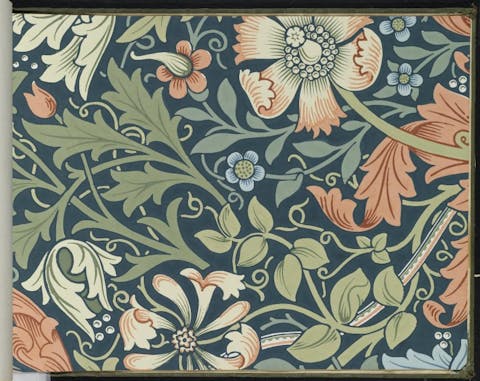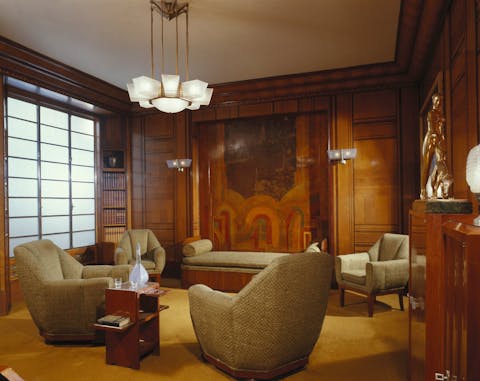A History of 20th Century Design
The twentieth century was an extremely dynamic, transitionary period in our history, characterized by conflict, technological innovation, and social advancement, with pivotal events such as WWI and WWII, the first man landing on the moon, and the civil rights movement to name a few.
Art and design from this period saw a great shift from traditional values of technical mastery and eurocentrism towards the emergence of countercultures and minimalistic, functional aesthetics drawing from an eclectic source of inspirations. It is no wonder that today the 20th century is regarded as being a golden era for design.
Check latest 20th Century Design Auctions at Barnebys Here!
What was happening?
The 20th century was a time marked by drastic cultural events and shifts. The first two decades of the century saw unprecedented violence during both first World Wars, as industrialized, and even nuclear weapons were introduced to the warfront for the first time. The collective trauma of these events instilled itself in artists who were forced to contend with the reality of mass destruction, injury, and genocide. Following the conclusion to second World War, people were eager to live life in the moment, revel in its pleasures, and indulge in excess and frivolity, which were all themes embraced by artists and designers of the time. The Great Depression humbled international sentiment, however, with resources and funds running low; artists turned towards creating design from simplicity and austerity, placing value on practicality over extravagance.
The subsequent improvement in mass manufacturing techniques saw designers accept commercialism while still greatly focusing on challenging public perception of tradition and what constitutes ‘art’. The 20th century is an era particularly unique in its incredible variety of artistic movements and eras. At any given decade there were a multitude of differing schools of thought amongst artists and intellectuals, so it is difficult to narrow down which movements remain the most influential today.
"The Bauhaus School was an educational establishment in Germany from 1919 to 1933, that sought promulgate the idea of creating a ‘total’ work of art, combining elements of fine arts, architecture, and design into one whole."
Arts and Crafts
Starting in the later 19th century but continuing and enjoying popularity until 1920, the Arts and Crafts movement celebrated simplicity, traditional forms, drawing inspiration from folk, medieval, or romantic sources. It was largely a response to a perceived decline in standards and quality brought on upon by industrialism and mass manufacturing, and also pushed against the excessive frivolity and ornateness of Victorian sensibilities. Lately a lot of William Morris's, one of the pioneers of the movement, wallpapers were revived and are once again one of the favourite interior design detail, featuring intricate floral designs. One of the movement’s most notable artists is Gustav, Stickley, whose work has become increasingly popular amongst collectors in recent decades; In 1988, Barbara Streishand purchased a Stickley sideboard for £257,000.

Gustav Stickley, Dropfront Desk, ca. 1903, Brooklyn Museum. Image: Wikipedia /License: Public Domain

William Morris, Wallpaper Sample, Compton 323, c. 1917, Brooklyn Museum. Image: Wikipedia/ License: Public Domain
Art Deco
Another iconic style of the 20th century is Art Deco, a movement that saw its peak during the 1920s. Originating from France, the style draws from a variety of sources, including the sharp, geometric patterns of Cubism and the Vienna Secession movement, the vivid colors of Fauvism, and the forms of traditional Japanese, Persian, Egyptian, and Mayan. It symbolized the opulence and wealth of the 1920’s, an era in which the aftermath of World War I saw an economic boost and a whole decade of celebration.

An Art Deco study by the Paris design firm of Alavoine,(1928–30) now in the Brooklyn Museum. Image: Wikipedia /License: Public Domain
Bauhaus
The Bauhaus School was an educational establishment in Germany from 1919 to 1933, that sought promulgate the idea of creating a ‘total’ work of art, combining elements of fine arts, architecture, and design into one whole. When the school closed down due to pressure from the Nazi regime, its leaders emigrated elsewhere across the world, earning the movement international recognition and influence.

View of the Bauhaus in Dessau, Germany. Image: Public Domain

Clock designed by Erich Dieckmann, 1931. Image: Wikipedia/ License Public Domain
Related: How to Value: 20th Century Design
Modernism
In design, Modernism took place roughly between the 1930s and 1960s, and arguably established itself as the most enduringly influential and highly regarded movements of the century. Modernist designers sought to break away from the past, rejecting tradition and convention, and embracing minimalism. It is characterized by its analytical approach to the functionality of buildings and furniture, featuring a proclivity towards asymmetry and focus on scale. Charles and Ray Eames are both world renowned contributors to the modernist design movement. Today their famous Eames Chairs consistently sell for up to £5000.

Le Corbusier, Villa Savoye in Poissy, France (1928–1931. Image: Valueyou /License: CC BY-SA 3.0
Post-Modernism
Post-Modernism differs from previous design movements in its diversity. Post-Modernist pieces may, stylistically, have very little in common but are connected by their intentional rejection of previous ideas such as the functionalism of the Modernist style. They are by nature new, avant-garde and often deliberately shocking or ironic. American architect Robert Venturi, perhaps the first Post-Modernist furniture designer, used distortion, ambiguity and ironic historical references in his designs.
Fundamentally artistic and expressive, Post-Modernist design places style ahead of function. The Studio Alchimia, formed in Milan in 1976, attempted to create furniture with an emotional relationship, instead of a functional one. This sometimes rendered pieces completely impractical. Possibly the most famous Post-Modernist group, also located in Milan, was Memphis which, despite its links with Alchimia, created very different pieces featuring bright colours and inexpensive materials. Ultimately, as with many Post-Modern fashions, Memphis lasted only a short time and quickly became seen as dated.

Enorme Telephone, Ettore Sottsass and David Kelly (IDEO), 1986, Image: Wikipedia/ License: Public Domaine
The Golden Era for Design
With such a remarkably broad pool of styles, influences, and inspirations to draw from, 20th century design is without a doubt one of the most fascinatingly complex and alluring sectors of the art world. Combining elements from the past, present, and future, it is an era that seeks not only to be practical in function whilst still serving as a work of art, but to challenge previously concrete, unquestionable views and standards that marked previous centuries. Every movement and school of thought reveals a reaction to the state of the world in which it was created, drawing forth from culture, politics, technology, and more into one unit. It is no surprise that the impact of 20th century design remains distinctly relevant in our 21st century world today, and will likely continue to intrigue and influence for generations to come.

